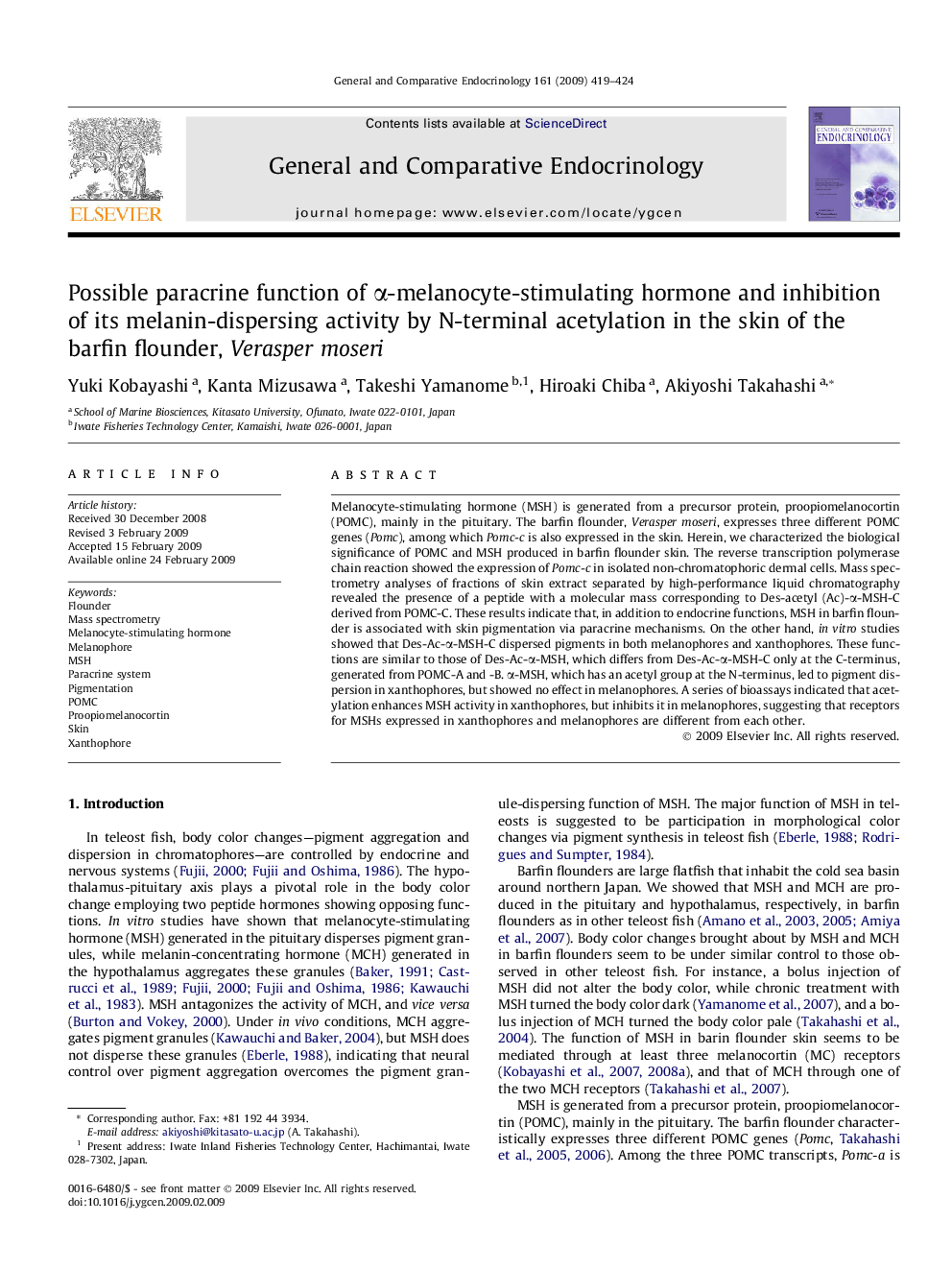| Article ID | Journal | Published Year | Pages | File Type |
|---|---|---|---|---|
| 2801550 | General and Comparative Endocrinology | 2009 | 6 Pages |
Melanocyte-stimulating hormone (MSH) is generated from a precursor protein, proopiomelanocortin (POMC), mainly in the pituitary. The barfin flounder, Verasper moseri, expresses three different POMC genes (Pomc), among which Pomc-c is also expressed in the skin. Herein, we characterized the biological significance of POMC and MSH produced in barfin flounder skin. The reverse transcription polymerase chain reaction showed the expression of Pomc-c in isolated non-chromatophoric dermal cells. Mass spectrometry analyses of fractions of skin extract separated by high-performance liquid chromatography revealed the presence of a peptide with a molecular mass corresponding to Des-acetyl (Ac)-α-MSH-C derived from POMC-C. These results indicate that, in addition to endocrine functions, MSH in barfin flounder is associated with skin pigmentation via paracrine mechanisms. On the other hand, in vitro studies showed that Des-Ac-α-MSH-C dispersed pigments in both melanophores and xanthophores. These functions are similar to those of Des-Ac-α-MSH, which differs from Des-Ac-α-MSH-C only at the C-terminus, generated from POMC-A and -B. α-MSH, which has an acetyl group at the N-terminus, led to pigment dispersion in xanthophores, but showed no effect in melanophores. A series of bioassays indicated that acetylation enhances MSH activity in xanthophores, but inhibits it in melanophores, suggesting that receptors for MSHs expressed in xanthophores and melanophores are different from each other.
